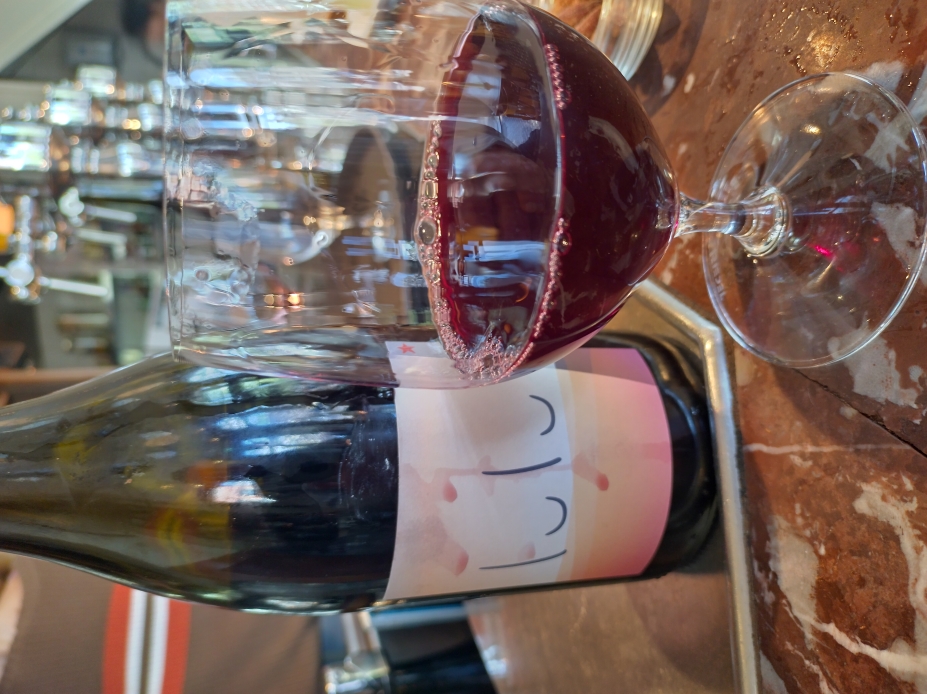Auvergne, the new Jura?
Not so long ago, natural wines from Jura were easy to find and most often affordable. You could effortlessly locate a bottle of your favorite winegrower in a cave and enjoy it with friends like any other wine. Today, it has become a luxury if only you can find one. Today, however, it has become a luxury to find such wines, primarily due to Jura’s growing popularity among wine enthusiasts. You can find videos on YouTube featuring wine experts and sommeliers praising the quality of these wines. It is improbable that we will find affordable wines from Jura again. This situation raises a new question for me: can we predict the next trending wine region before it is too late?
One potential candidate can be found in a specific area of the Auvergne Region in France: The Puy de Dôme. The Puy de Dôme department is situated in the center of France, in the north of Auvergne. It is a region of mountains formed by ancient volcanoes (dormant for 8,000 years). The soil is primarily composed of basalt (volcanic soil), siliceous, and limestone.
Winegrowing has been known and documented in this area since at least the 5th century in what is now the department of Puy de Dôme, but also in the North and the East, in the present-day Allier and Loire departments.
The vineyard expanded during the Middle Ages, with the growth of commerce in the Loire Valley via the Allier River and the flow of pilgrims to and from Santiago de Compostela. The size of the vineyard during the 18th century grew to about 20,000 hectares. During the phylloxera crisis in France in the mid-19th century, the area was spared for several years, making it one of the leading regions alongside Burgundy while the Midi and the south of France struggled with the bug. By the end of the 19th century, the vineyard exceeded 40,000 hectares.
However, phylloxera eventually appeared in the region, decimating the vineyard. Less than 1,000 hectares survived. Less than 1000 ha survived, mostly small family-owned vineyards.
The renewal started in 1951. A first appellation is created for Côtes d’Auvergne (VDQS) in 1951 covering historic vineyards which survived, followed in 1968 by another appellation Puy de Dôme (IGP) covering all the departments. In 2011, the VDQS appellation was replaced by the more prestigious appellation AOC. With the AOC five geographical denominations were created; Madargue, Chateaugay, Chanturgue, Corent, and Boudes. They produce only red wines, except Corent, which exclusively produces Rosé wines.
But The vineyard remains limited to about 400 hectares for each appellation, but what is interesting is the variety that can be used. Chardonnay, Gamay, and Pinot Noir for the AOC seem to be very classical (although the AOC will integrate five more varieties in next year). The IGP Puy de Dôme allows more than 30 varieties. Among them some very familiar; Gamay, Pinot Noir, Chardonnay, Chenin, Cabernet Sauvignon, and Malbec (Côt). There are also some ancient varieties of Moudeuse, Portugal Bleu, Chatus and Gamay de Bouze Additionally, a few hectares of vines fall under the Vin de France appellation, where limited rules apply.
The Gamay used in Auvergne is not the same as in Beaujolais, the Gamay d’Auvergne. It is a historic vine variety from the region. The wine is very fresh with a spicy and pepper aroma, along, sometimes with a distinctive minerality.
Auvergne wines have little or no notoriety. My edition of the “Concise Guide to Wine” From Neel Burton doesn’t mention it. The “Wine Folly” book only mentions the region on a Map of the Loire Valley, only the “Grand Atlas des Vignobles de France” (Grand Atlas of the vineyards of France) mentions it.
https://boireqms001.blob.core.windows.net/blogimg/LuLu.jpg

But there are some talented winemakers. Thinks about Patrick Bouju (see the video is in French) or Jean Maupertuis. And, If I open the natural wine smartphone app, Raisin on my phone, and I scroll on Auvergne, I found 29 natural winemakers around Clermont Ferrand. Many more you can think of. More in other appellations. Domains are small, mostly family farms. The vines grow at an altitude between 300m-600m with a good thermic amplitude.
The climate, the soil, winemaker personalities, and local grapes produce iconic wines with a strong identity. We already know that the Gamay d’Auvergne is a more rustic variety, that produces more earthy wines than the Variety found in Beaujolais. The wine has more mineral notes and melted tannins, with Raspberry and cherry flavors.
With its basaltic soil, côtes d’Auvergne one offert also distinctives caracteritics. According to a study from “La Revue des Oenologues”(1) Gamays from volcanic soil can be less acidic, more lactic, with melted tannins, and sometimes spicier than their limestone counterpart.
So, with interesting soil, ancestral wine-making practices, native grapes varieties, and iconic winemakers, the Auvergne region is something to discover. There is so much possibility to discover. Wines from the Puy de Dômes is one of the two volcanic wine regions in France (the second is the Cilaos, on Reunion Island). To answer the question, is Auvergne the new Jura in the natural wine world? Maybe, Auvergne has some of the qualities that made the wine from Jura famous, only time will give us an answer.